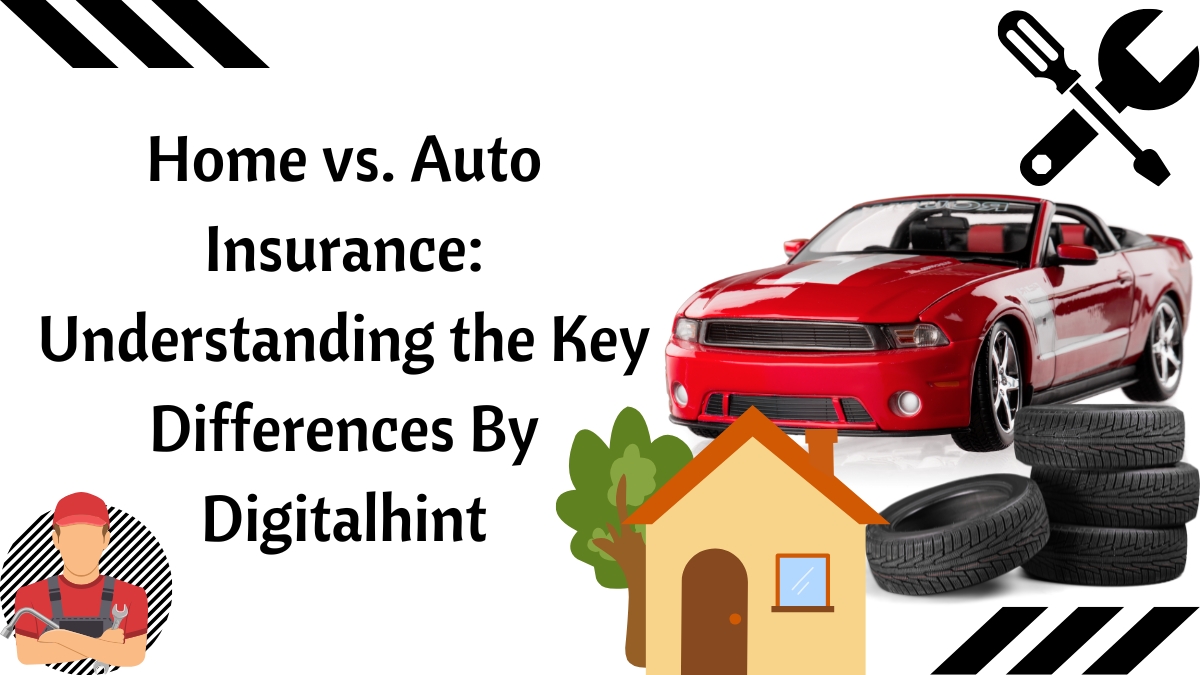When it comes to protecting your most valuable assets, insurance plays a critical role. Both home insurance and auto insurance are essential safeguards for your property and financial well-being. However, they serve different purposes and offer unique types of coverage. In this guide, we’ll break down the differences between home and auto insurance, explain their benefits, and help you determine why having both is crucial.
What is Home Insurance?
Home insurance is designed to protect your home and its contents against unexpected events such as fire, theft, or natural disasters. It also provides liability coverage if someone is injured on your property. Let’s explore its main components:
Types of Coverage in Home Insurance
- Dwelling Protection: Covers the structure of your home, including walls, roof, and built-in appliances.
- Personal Property: Protects items inside your home, like furniture, electronics, and clothing.
- Liability Coverage: Pays for legal expenses and damages if someone is injured on your property or if you accidentally damage someone else’s property.
- Additional Living Expenses (ALE): Covers costs like hotel stays and meals if your home becomes uninhabitable after a covered event.
Example Scenario
Imagine a severe storm damages your roof, causing a leak that ruins your living room furniture. Home insurance steps in to pay for the roof repairs and furniture replacement, keeping you from bearing the financial burden alone.
What is Auto Insurance?
Auto insurance protects your vehicle and offers financial protection in the event of accidents, theft, or damage. Additionally, it shields you from liability if you are responsible for injuries or property damage to others.
Types of Coverage in Auto Insurance
- Liability Coverage: Covers costs if you cause an accident that injures another person or damages their property.
- Collision Coverage: Pays for repairs to your car after an accident, regardless of fault.
- Comprehensive Coverage: Protects against non-collision events like theft, vandalism, or natural disasters.
- Personal Injury Protection (PIP): Covers medical expenses for you and your passengers after an accident.
- Uninsured/Underinsured Motorist Coverage: Provides protection if you’re hit by a driver who lacks sufficient insurance.
Example Scenario
You’re involved in a minor fender bender, and the other driver’s car sustains significant damage. Auto insurance helps cover the repair costs, ensuring you don’t pay out of pocket.
Key Differences Between Home and Auto Insurance
Although both policies aim to provide financial protection, their coverage and purpose differ significantly. Here’s a closer look:
| Aspect | Home Insurance | Auto Insurance |
|---|---|---|
| Primary Focus | Protects your home and belongings | Protects your vehicle and liability |
| Coverage Area | Includes property, possessions, and liability | Includes vehicle, liability, and medical expenses |
| Legal Requirements | Not legally mandatory but often required by lenders | Legally required in most states |
| Customizability | Can include riders for valuables or flood insurance | Offers add-ons like roadside assistance or rental coverage |
Why Both Types of Insurance are Essential
Having both home and auto insurance ensures comprehensive protection for your assets and financial stability. Here’s why they’re indispensable:
- Risk Mitigation: Accidents and disasters can happen anytime. These policies minimize financial risks by covering repairs, replacements, and liability.
- Legal Compliance: Auto insurance is legally mandated in most states, and mortgage lenders often require home insurance.
- Peace of Mind: Knowing you’re covered allows you to focus on recovery and rebuilding after unexpected events.
Practical Tips for Choosing the Right Coverage
When selecting home and auto insurance, consider these factors:
- Assess Your Needs: Evaluate the value of your assets and potential risks.
- Compare Policies: Shop around for the best rates and coverage options.
- Bundle Policies: Many insurers offer discounts if you purchase both home and auto insurance from them.
- Read the Fine Print: Understand the exclusions and limitations of your policies.
Best Cheap Car Insurance in the USA: Your Guide to Affordable Coverage
Final Thoughts
Home and auto insurance serve as critical safety nets, protecting you from unforeseen expenses and liabilities. While they address different needs, both are essential to safeguarding your financial future. By understanding their unique features and benefits, you can make informed decisions and choose the right coverage for your lifestyle.
Take the time to review your policies regularly, adjust coverage as needed, and work with a trusted insurance provider to ensure you’re always prepared for life’s uncertainties.

